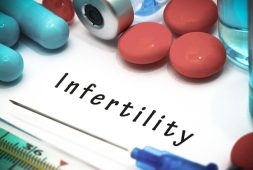Studies Find That Women Who Go Through More Pregnancies and Longer Reproductive Lifespan Are Protected Against Cerebral Small Vessel Disease

A recent study published in the September 27, 2023, online edition of Neurology, the medical journal of the American Academy of Neurology, suggests that individuals who have been exposed to higher cumulative levels of estrogen over their lifetime may experience a reduced risk of developing cerebral small vessel disease. Cerebral small vessel disease is a subtype of cerebrovascular disease characterized by damage to the brain’s small blood vessels, which can increase the likelihood of cognitive decline and dementia.
“Previous research has shown that rates of cerebrovascular disease increase after menopause, which is often attributed to the absence of hormones. It remains unknown whether the amount of exposure to hormones before menopause extends that window of protection to after menopause.” Said Kevin Whittingstall, PhD, the study author from the University of Sherbrooke in Quebec, Canada
In this comprehensive study, scientists delved into the intricate connection between a person’s lifetime hormone exposure, pregnancy history, and their reproductive lifespan in relation to a key marker of vascular brain health called white matter hyperintensities. These hyperintensities, indicative of age-related brain injury, were the focal point of the investigation.
The research involved an extensive cohort of 9,000 postmenopausal women in the United Kingdom, all with an average age of 64 and without cerebral small vessel disease at the study’s outset. Detailed information about their reproductive health, encompassing data such as the age of their first menstruation, onset of menopause, number of pregnancies, and use of oral contraceptives and hormone therapy, was gathered. Additionally, brain scans were conducted to identify cerebral small vessel disease, primarily by assessing white matter hyperintensities.
To gauge lifetime hormone exposure, researchers tallied the years participants spent pregnant and coupled this with the duration of their reproductive lifespan (from first menstruation to menopause). On average, participants had an exposure of 40 years. Post-adjustments for variables such as age, high blood pressure, and smoking, the study revealed a compelling finding: individuals with higher lifetime hormone exposure exhibited reduced volumes of white matter hyperintensities. The average total volume of these hyperintensities was measured at 0.0019 milliliters (ml). Those with elevated lifetime hormone exposure demonstrated a marked decrease in white matter hyperintensity volume, specifically 0.007 ml less than individuals with lower lifetime hormone exposure.
Crucially, researchers also considered hormone exposure by accounting for the duration of oral contraceptive use and hormone replacement therapy. Remarkably, these factors did not diminish the impact of the number of pregnancies and reproductive years on white matter hyperintensities.
What sets this study apart is the revelation that both the number of pregnancies and the length of reproductive years independently influenced white matter hyperintensity volumes. This nuanced understanding sheds light on the intricate interplay between hormonal exposure and brain health, emphasizing the significance of reproductive history in the context of cerebral well-being.
“Our study highlights the critical role of reproductive history in shaping the female brain across the lifetime,” Whittingstall said. “These results emphasize the need to integrate reproductive history into managing brain health in postmenopausal women. Future research should investigate ways to develop better hormonal therapies.”
The study had a limitation in that data on reproductive factors relied heavily on participants’ recollection of events, which might not have been entirely accurate.
It is important to note that the study does not establish a causal relationship between reduced estrogen exposure and cerebral small vessel disease; it merely demonstrates an association between the two.
Furthermore, the research received support from the Natural Sciences and Engineering Research Council of Canada and the Quebec Research Fund.



